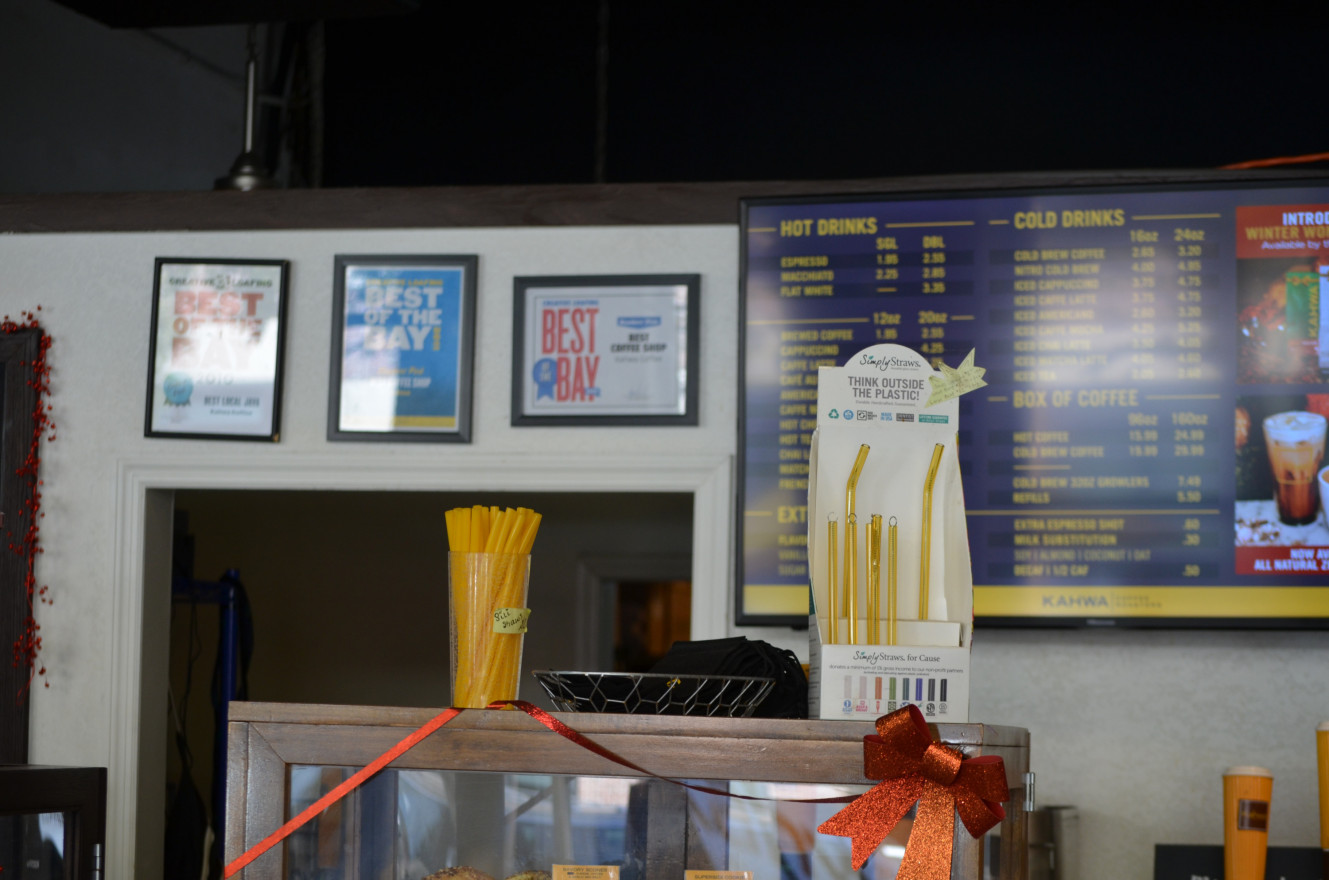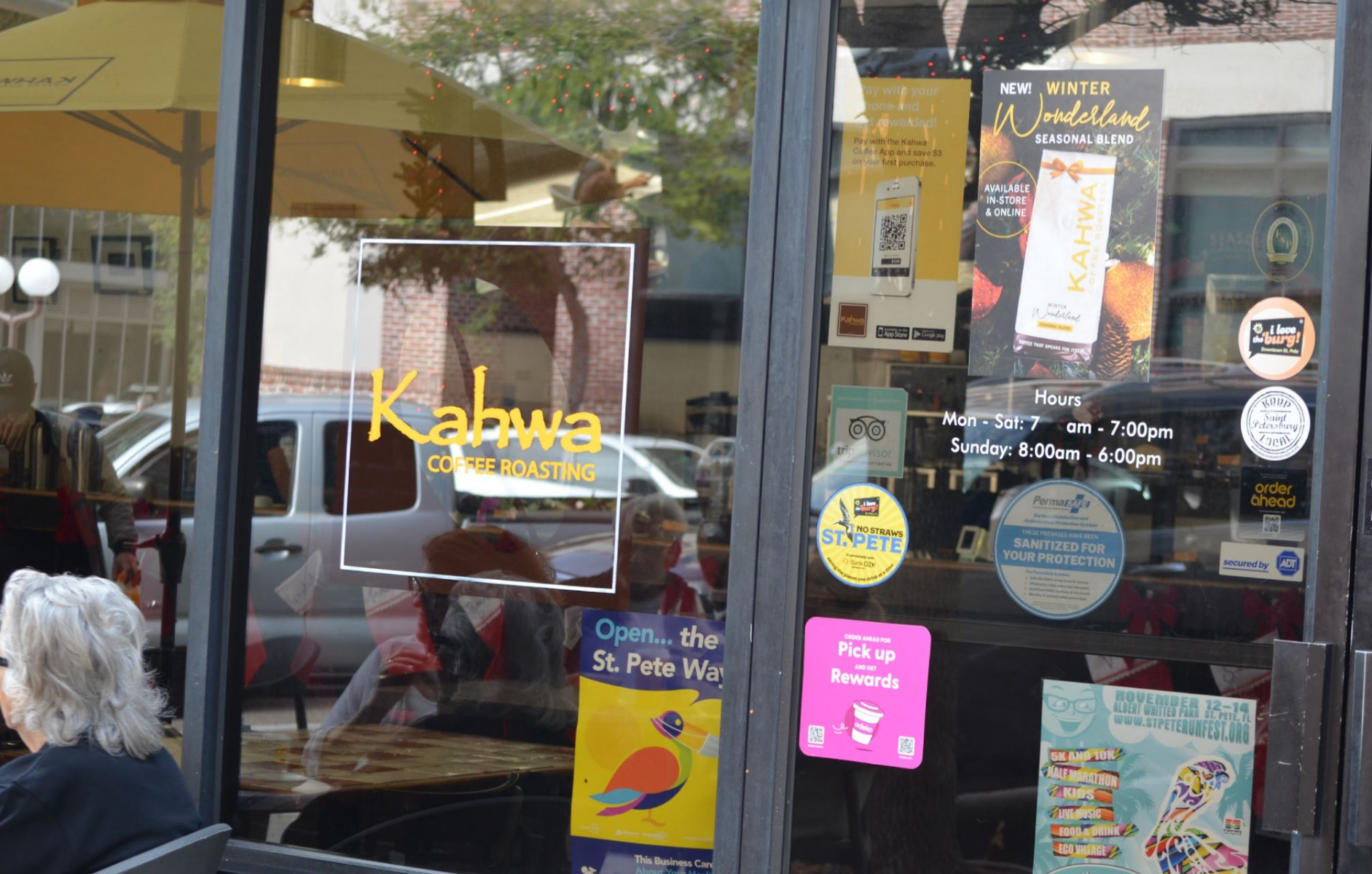
(Carter Weinhofer/Eckerd College)

(Carter Weinhofer/Eckerd College)
Within the city of St. Petersburg, Florida, it’s hard to find a single plastic straw. That is, of course, unless you ask for it.
The entire city of St. Pete has implemented an ordinance banning plastic drinking straws. Gina Driscoll, Vice Chair of the St. Petersburg City Council, was one of the founders of the “No Straw St. Pete” campaign which ultimately led to the ban being passed in 2018.
“It was never really just about plastic drinking straws,” Driscoll said. “It was starting with that one simple object that grew into a bigger conversation about making better choices for the environment.”
An estimated 6300 million metric tons (Mt) of plastic waste had been produced between 1950, when the large-scale production and use of the material began, and 2015, according to a study from that year. Of that 6300 Mt, a mere 9% has been recycled. Another study showed that in 2010 alone, 275 Mt of plastic was produced in 192 coastal countries. Somewhere between 4.8 and 12.7 Mt entered the ocean that same year. St. Petersburg’s proximity to the Florida Gulf Coast pins the municipality at the front of these issues.
Passionate about the environment and sustainability, Driscoll wanted to figure out how St. Petersburg could “lead the way” in getting rid of single-use plastics. During her first year on city council, Driscoll came across an article about a ban on plastic straws in Fort Myers.
“Sometimes we find great ideas by looking at what other cities are doing,” Driscoll said.
This led to the formation of a campaign called “No Straw St. Pete,” which worked in collaboration with local organizations like “I Love the Burg” and Suncoast Rise Against Plastics Coalition, even including the national Bank OZK. Businesses could pledge to go “straw free” and join the campaign, getting them a sticker on their door and more credit among environmentalists. By December 2018, the campaign had demonstrated that banning plastic straws could be viable.
The Suncoast Rise Against Plastics (RAP) Coalition is composed of 17 institutions and environmental groups including Tampa Bay Watch, St. Petersburg Audubon Society, Clearwater Marine Aquarium, and national groups like Oceana.
Oceana Field Representative for the Florida Gulf Coast, Hunter Miller, was involved with the St. Petersburg straw ban from early on, meeting with the Suncoast RAP Coalition and members of the St. Petersburg city council.
Miller acknowledged that the coalition means more than just passing laws. Volunteers work hard during beach clean ups and other events throughout the area, but the pollution problems still linger.
“What we’ve found is, and what volunteers have found, is that those individual things are important, but they’re not going to get us to where we need to be,” Miller said. “And that’s what really kind of brought the coalition together.”
Nevertheless, volunteers were a driving force behind this campaign, according to Miller. After the “No Straw St. Pete” campaign started in early 2018, volunteers from the St. Petersburg community went door-to-door to businesses to propose the straw ban and try to rally support.
“It takes a village, really, when you want to get something ambitious done,” Miller said. “But that strong volunteer legwork and people coming together is what it takes.”
And businesses really were open to this idea of banning straws. Miller said that a survey sent out to businesses after the ordinance was put in place showed “overwhelmingly positive” attitudes from businesses in response to the ordinance, and very few businesses in the St. Petersburg area opposed it.
According to Driscoll, businesses were not forced to quit plastic straws cold turkey. There was a “phasing period” that started with straws being available by request only or in drive thrus. Now, plastic drinking straws are not allowed anywhere in the city of St. Pete, unless by special request due to medical conditions.
Kahwa Coffee, a Tampa Bay coffee chain, is one business in St. Petersburg that has been with this from the start in 2018. According to Kahwa Marketing Associate Natalie Moore, the business is close to “I Love the Burg,” which is how they got on board with the “No Straw St. Pete” campaign.
“We were one of the first to partner with them and start removing plastic straws from the company,” Moore said. “Also with the production of sippy lids, we kind of stray away from offering straws at all.”
On behalf of the company as a whole, Moore said that they have seen mostly positive attitudes from customers about the straw ban.
“There always are people who don’t like it, but we do provide the alternative sippy lid so you don’t necessarily need a straw,” Moore said. “But honestly, a lot of our customers are local and very involved with the community, and they’re completely on board with the no plastic straws.”
Additionally, Kahwa has reusable plastic and metal straws available for sale.

There are 13 Kahwa coffee locations across the Tampa Bay area, and even though straws are only legally banned in the St. Petersburg locations, Kahwa does not offer plastic straws at any of their locations, according to Moore.
That being said, if you go to a Dunkin’ Donuts in St. Petersburg, you’ll likely be given a blue compostable straw instead of one made from plastic. But if you drive just ten minutes away to the neighboring city of Gulfport, you’ll get a plastic straw from the same franchise.
And that doesn’t just apply to Dunkin’ Donuts. Gulfport also considered banning plastic straws the same time that St. Petersburg did; but, the city council voted to table the consideration in 2018. Similarly, St. Pete Beach, a separate township from the city of St. Petersburg, lacks a ban on plastic straws. A lot of businesses in St. Pete Beach and all the beaches close-by do try to stay away from single-use plastic, but there is no law requiring them to do so.
St. Petersburg, Gulfport, and St. Pete Beach are all in the same county. So at a county level, there are no laws against plastics. It’s at the smaller city level that some laws do exist.
According to Associate Professor of Marine Science at Eckerd College Amy Siuda, policy is one of the most impactful ways to reduce single-use plastic pollution.
“Having the codified (ordinance against plastic straws) is much more effective than just asking people to reduce their straw use,” Siuda said. “Because then it’s just not available. You can just remove those things from the system and people will find other ways to live without a plastic straw.”
Siuda has been at the college for six years and runs the Tampa Bay Microplastics Monitoring Program with Professor of Biology and Marine Science Shannon Gowans. The program is a part of the larger Tampa Bay Estuary Program.
Siuda agrees that single-use plastics are something that can be avoided.
“Single-use plastics are mostly unnecessary,” Siuda said. “If we can reduce our single-use consumption, then we can reduce, hopefully, a lot of the harm that can be happening in the environment from plastics.”
Siuda and Gowans’ monitoring research focuses mainly on microplastics and how these “invisible” plastics can be affecting all sorts of organisms. As a plankton ecologist, Siuda has focused her attention on how these microorganisms, or copepods, are interacting with microplastics. Gowans, a marine mammalogist, realized that a larger grazer is also being affected by plastics in the bay––manatees.
While, according to Siuda, the majority of plastics are coming from the land and not from river runoff, humans are not always the main transportation of these plastics. When terrestrial animals, like a squirrel for example, get ahold of these plastics while scavenging, they inevitably break those plastics down.
“They’re dropping microplastics in the process of that, or breaking that thing down physically into smaller pieces that make it into the ocean as microplastics,” Siuda said. “The big stuff is harmful to bigger organisms, but the little stuff is kind of harmful to everything.”
Siuda also added that larger plastics are capable of transporting invasive species across water systems, having serious negative impacts on ecosystems.
This research and monitoring helps to buttress policies, and aids in educating others on the harms of single-use plastics and microplastics. According to Siuda, education starts the process of getting support from people, which leads to policies.
Just by choosing not to take one plastic straw, consumers have the ability to limit the amount of single-use plastic going into the system.
“I know it seems like one person can’t make a difference, but you have to start somewhere,” Siuda said.
The idea of starting somewhere small often leads to a larger-scale change. Miller said that this is a driving force for systemic change.
“What really brought people out to hit the pavement,” he said, “is the excitement to systematically address this problem through policy and knowing that the changes that they’re biting for locally are going to fuel the movement for bigger change at the state level, and the national level.”
––
Editor’s Note: This story is the first in the Planet Forward series “So Long, Single-Use?” Check back over the next several weeks for more stories about how communities and individuals can––and are––reducing single-use plastic waste.